Urban software
Author(s)
Arenas Basabe Palacios Arquitectos
Enrique Arenas Laorga (ES)
Luis Basabe Palacios (ES)
Luis Palacios Labrador (ES)
Local Partners
Soyka -Silber-Soyka Architekten
Actor(s)
City of Vienna – MA 21 Office
Siemens AG Österreich
Sozialbau AG
ARE (Austrian Real Estate)
Competition team
Enrique Arenas Laorga (ES)
Luis Basabe Palacios (ES)
Luis Palacios Labrador (ES)
architects
Europan 12 Wien - Siemensäcker
runner-up
2013
Team point of view
The project seeks a solution to the complex “Siemensäcker” area through a matrix that crosses 3 very different existing urban situations by means of 3 instruments.
Each situation requires an unconventional approach: an urban void awaiting occupation; a tertiary fabric awaiting completion; and an old factory seeking a new use.
We propose 3 TOOLS to solve the different situations:
- the design of flexible SUPPORTS;
- a SYNTAX that describes the production of the urban fabric without defining the outcome;
- SOFTWARE that manages the supports.
Employing the 3 tools in the 3 identified situations generates a strategic approach to the project that will be the start of a negotiation between the different actors involved in deciding the production of the city.
Jury point of view
The project is based on a comprehensive development matrix that works with parameters of participation, object-development, typological configuration, living models, and dynamics of growth. What it delivers is not an architectural design but a manual suggesting possible development scenarios. The mixing of different living-models provokes and enriches the rhythms of the living programme, making possible a new syntax for community life.
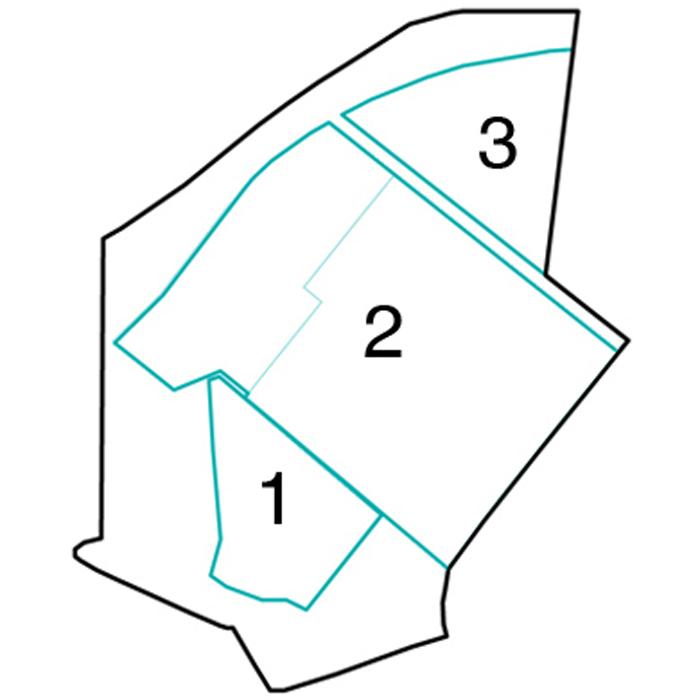
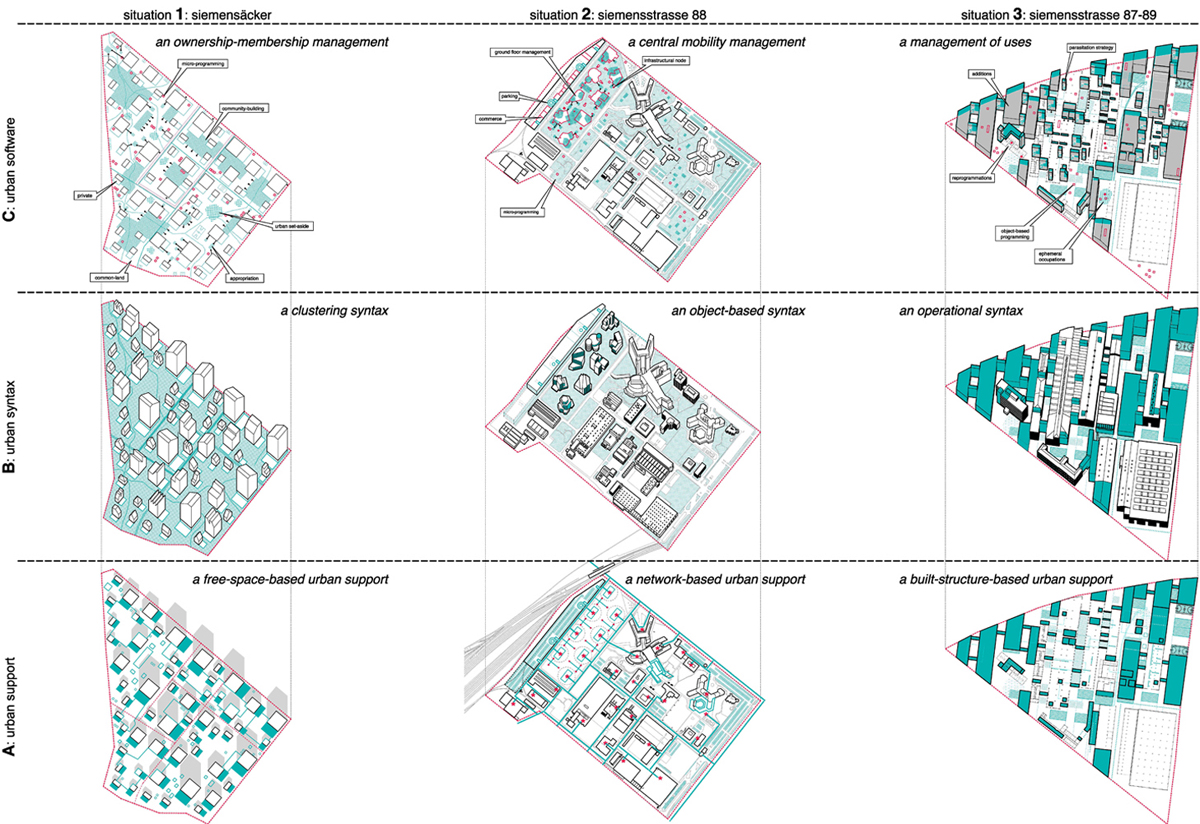
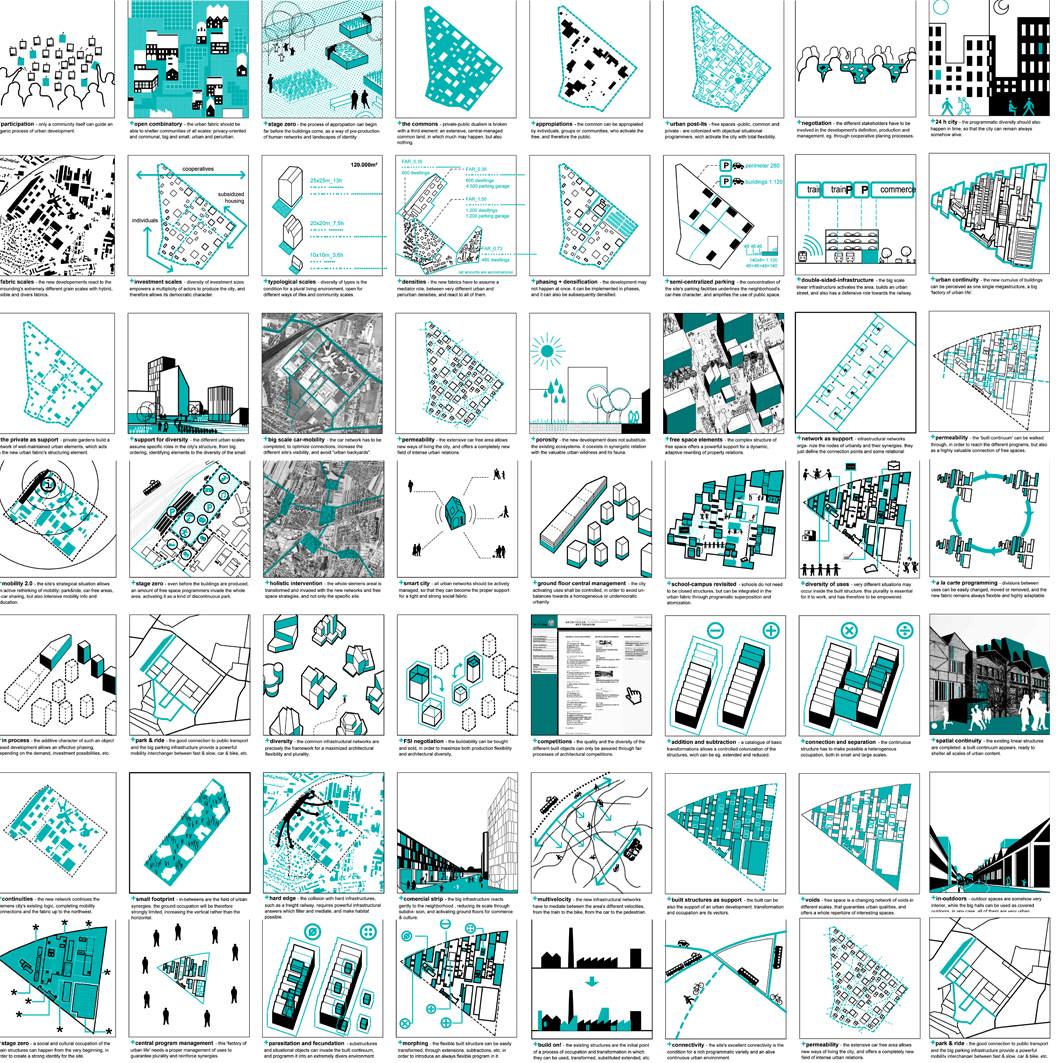
2014-2016
After winning the second prize in Wien-Siemensäcker site, the team has been invited to participate in the master plan development with the winning team SLLA Architects. Their proposal ‘Urban Software » did not solve the complexity of the area with an architectural project, but it set up a matrix as tool to define a negotiated planning. The compatibility of their project with the winning one allowed the team to be involved in a collaborative planning process.
Collaborative planning: the process of defining the master plan of an area of 8 hectares and 120,000 sqm built (density 1,5) has been carried out through workshops with a multidisciplinary team: architects, urban planners, landscapers, mobility experts, etc… During the design process, this extended team was in permanent contact with representatives of the institutions involved on the site: the Vienna City Council (MA21), the largest soil investors (Sozialbau AG) and Europan Austria.
The result of this common process is a diverse, complex fabric, open to different scales of investment. In a gradation of density from its edge with Siemens industrial area, buildings decrease from big scale to the small scale of single-family dwellings. Buildings of multiple sizes (XL, L, M, S) are arranged on each side of a large linear park with a pedestrian accesses network, freeing the new neighbourhood from the presence of the car. Once the master plan is completed, the process continues with the detailed description for the qualities of free spaces, alternative mobility and mix of uses, as well as the definition of architectural projects.
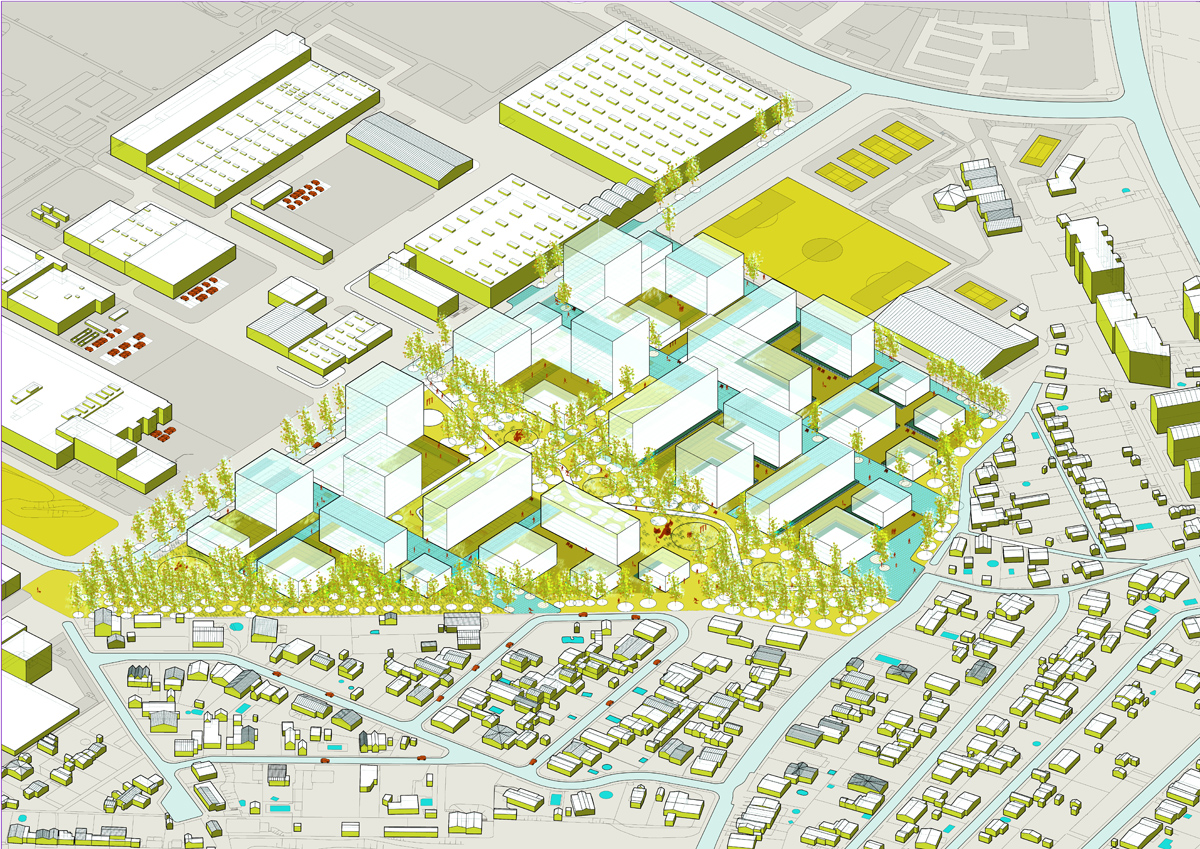
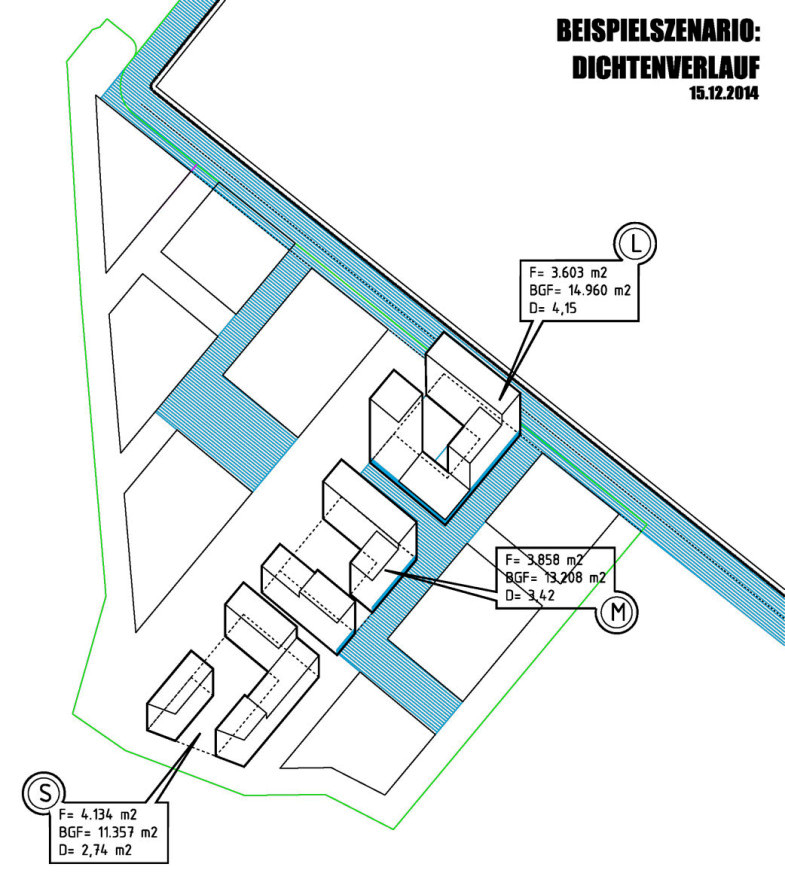
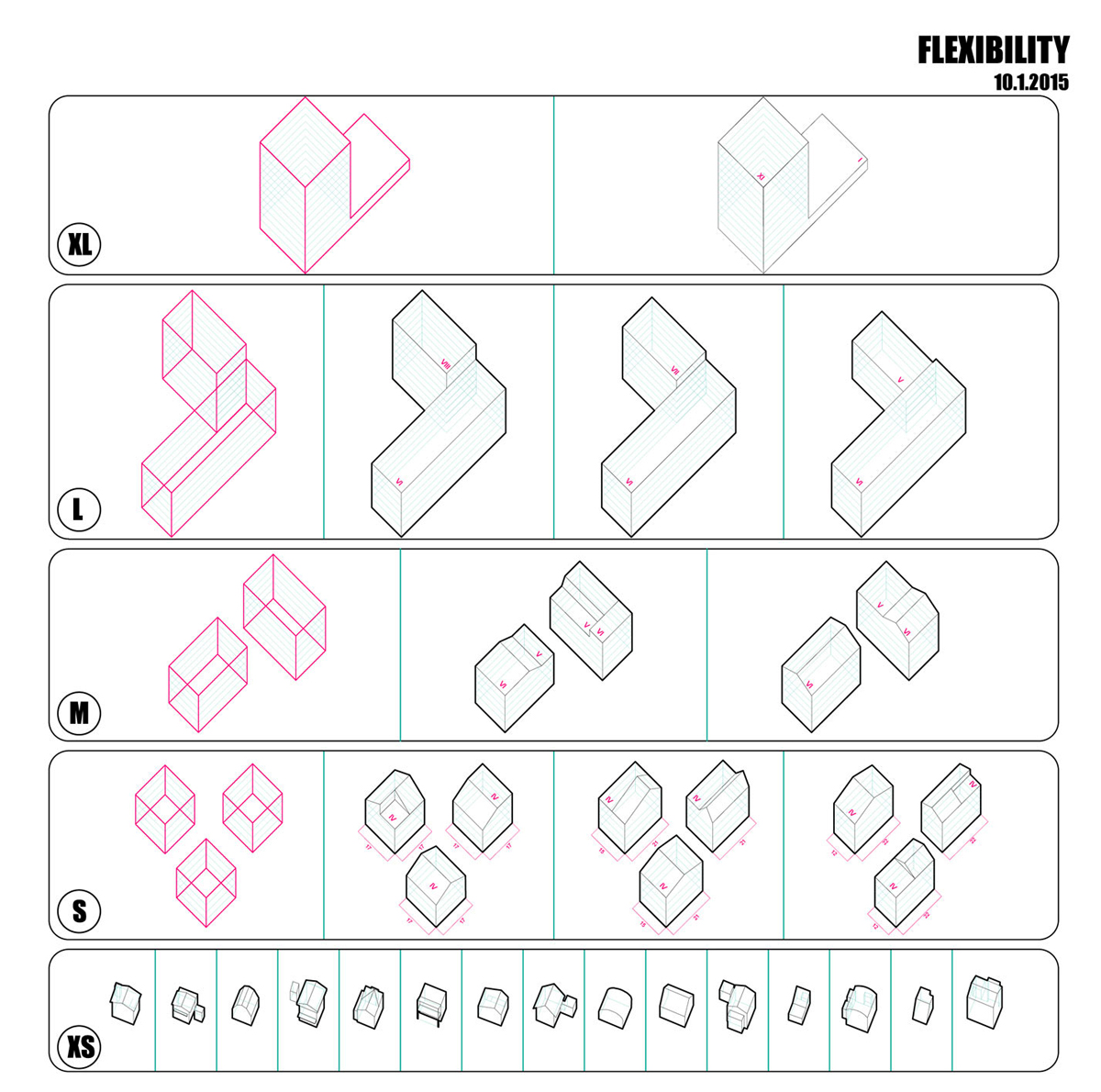
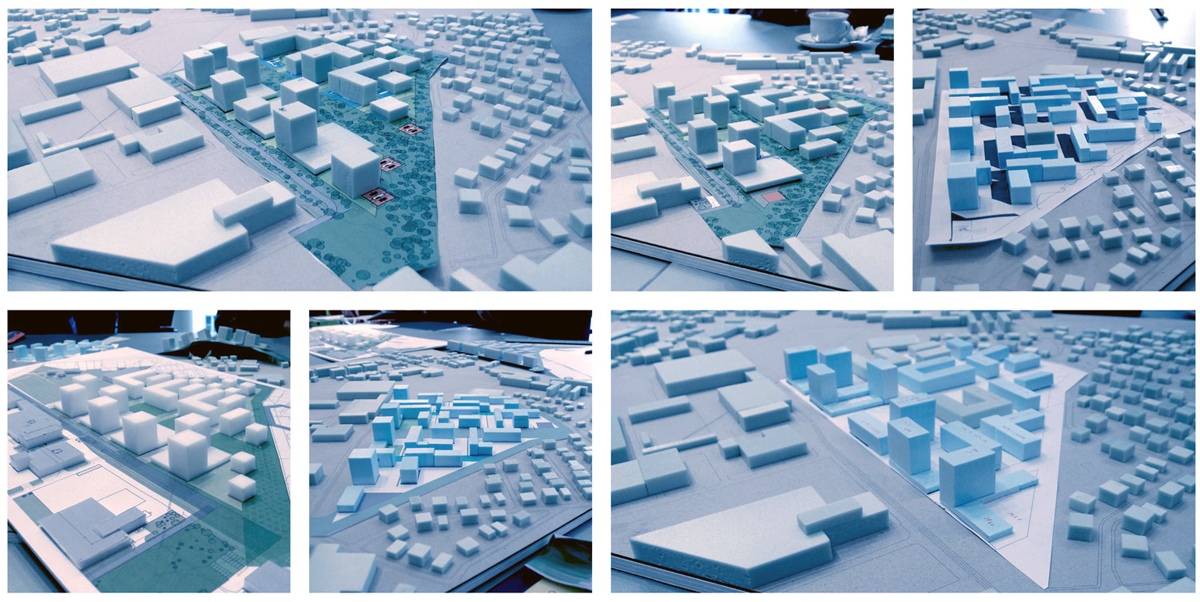
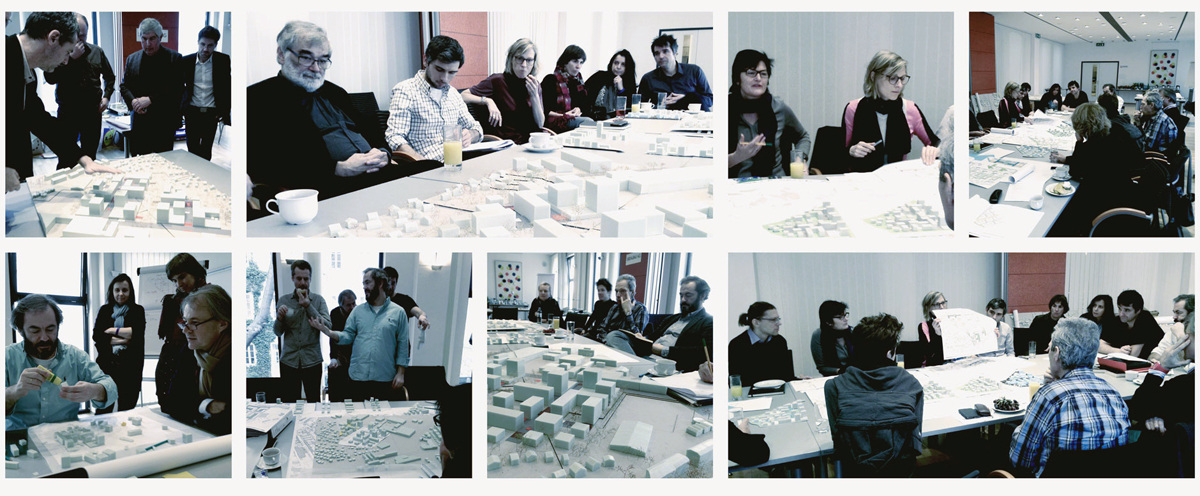
2017-2021
Once the masterplan approved by the Viennese city hall, the land owner commissioned the runner-up team with the design of 65 housing units in 3 blocks of different scales (size S,M,L).
The architecture design is determined by 5 qualities:
Bike city: the 3 housing blocks are connected within a platform in the basement floor, which as well resolves the plot’s complex topography and provides direct access to the homes by means of pedestrian lanes arriving at the community gardens with bicycle parking.
Commons: the collective character of the design is also reflected in the architecture design. Community spaces like the big bicycle parking, the large kitchen opened for the quarter’s community, a sun terrace and a children’s playground are connecting the 3 blocks with those spaces connecting the community.
Exterior unit: The design incorporates a new trend of Viennese contemporary housing: each of the 65 housing units includes a space referring to the exterior. Like this, balconies, bow windows, terraces and gardens are alternating among the flats improving housing quality and opening the homes to a green pedestrian-friendly surrounding.
Servant furniture: The housing takes place round single service furniture, which includes service zones, storage and sanitary installations. Like this, the living areas are orientated to the exterior and the day zone (living, dining, cooking) is disposed at the building’s edge receiving day light for many hours during the day.
Local materiality: wooden shutters are reflecting the materiality and the constructive system which are used in the buildings’ structure (bearing concrete walls with exterior thermal isolation, selection of local woods). Furthermore the selection of indigenous plants and trees for the green spaces is a necessary condition to conserve the ecological and sustainable quality of the construction process of the new quarter Siemensäcker.
The construction work has been completed end of 2021.
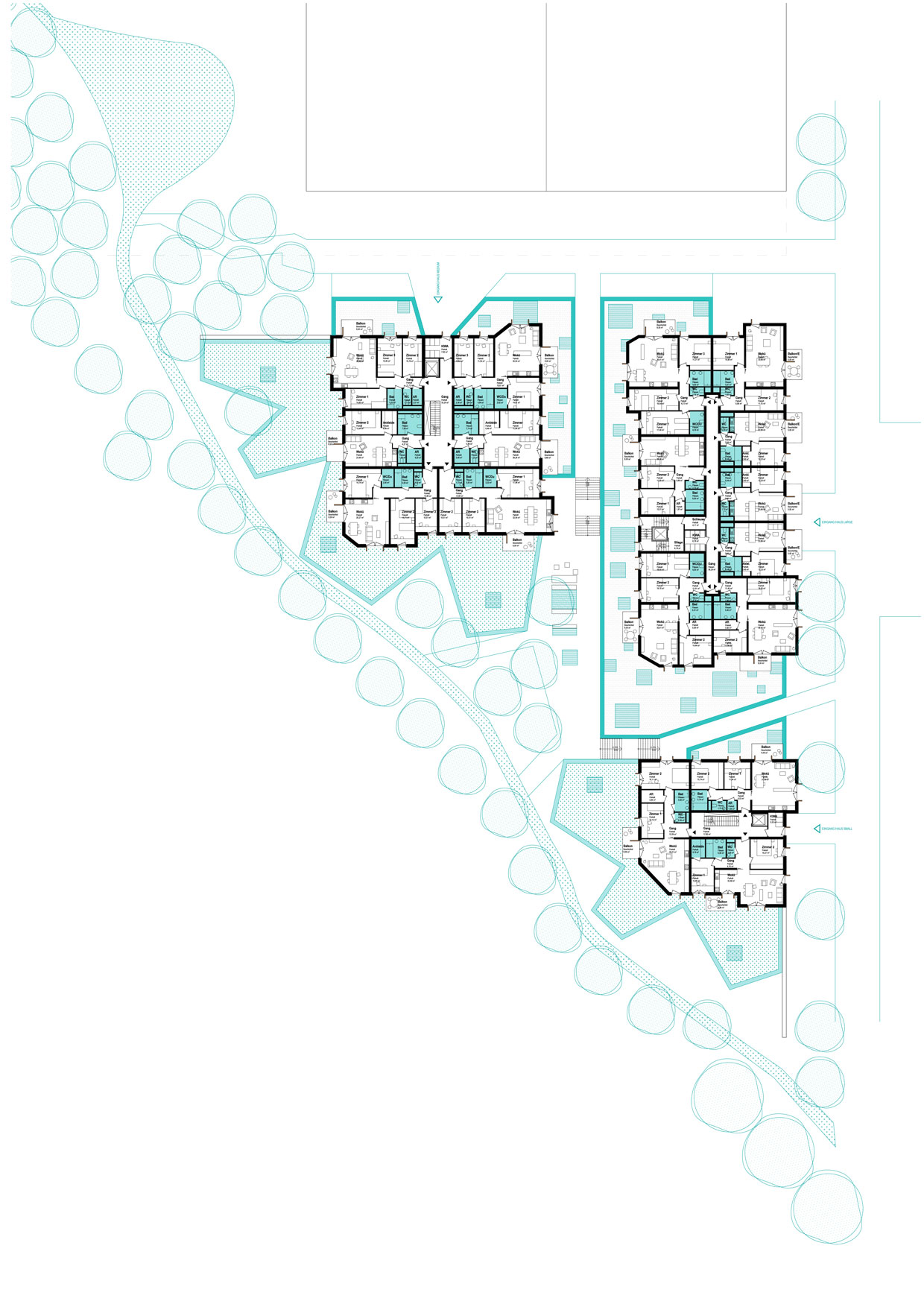


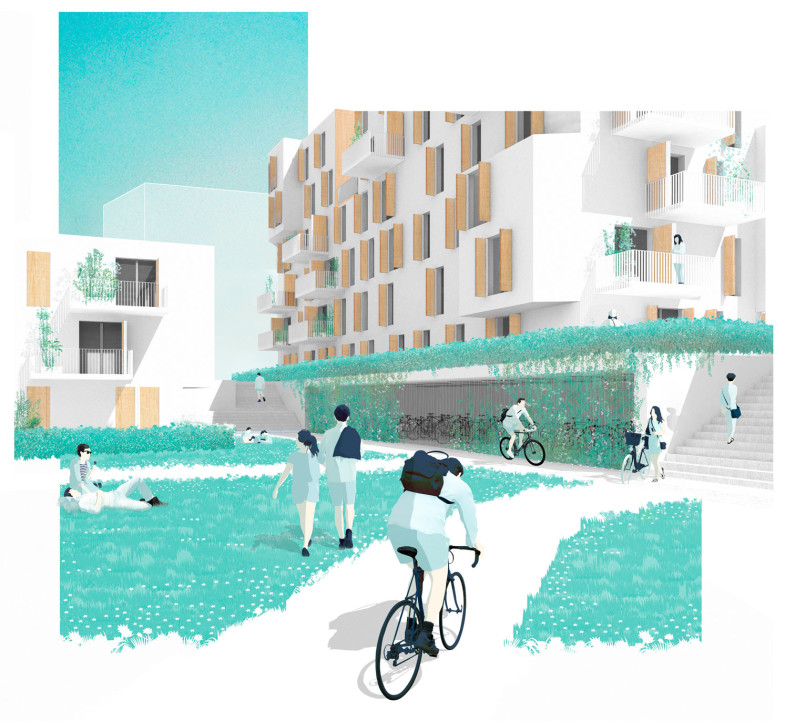
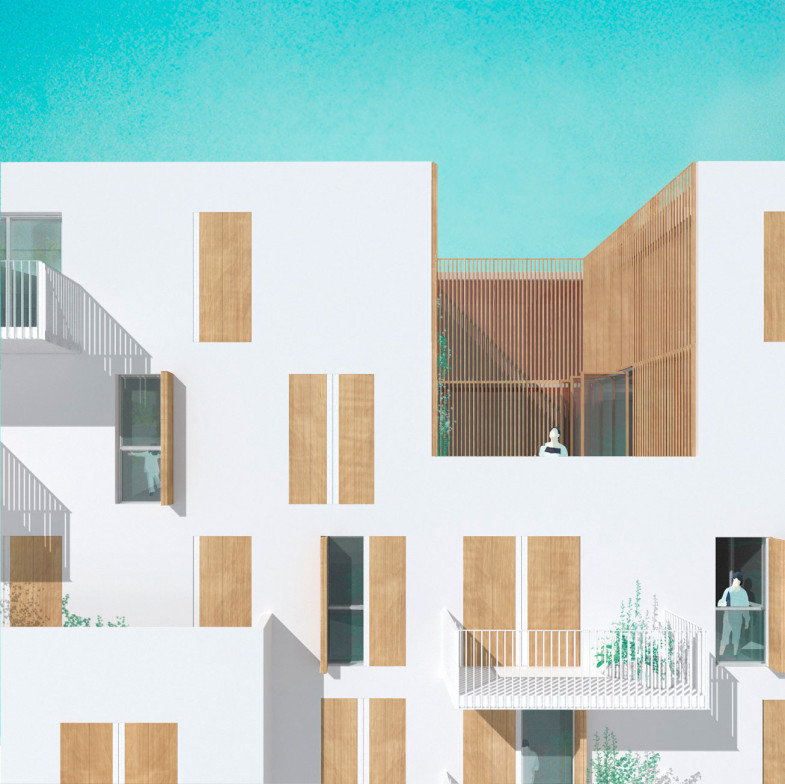
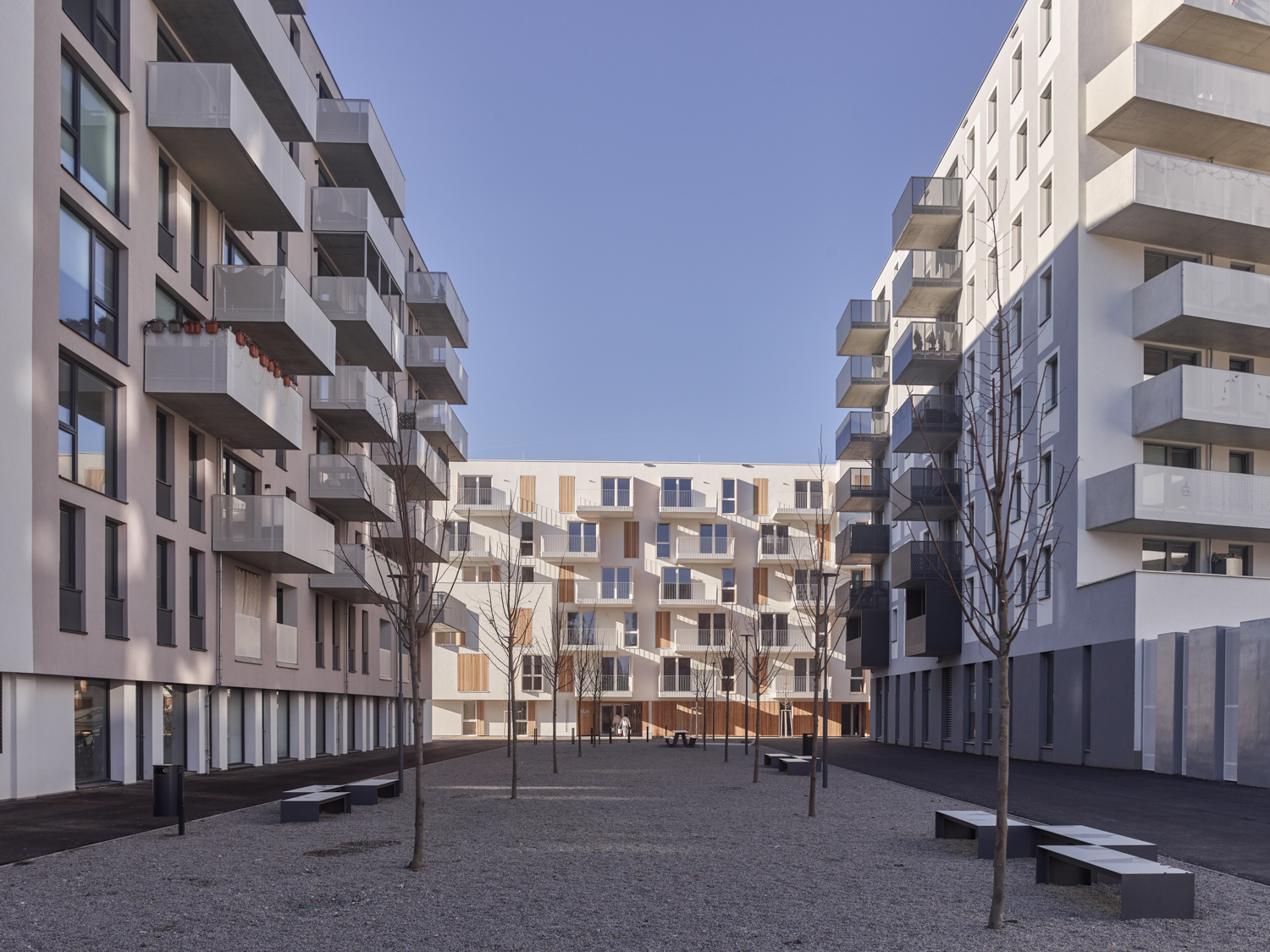
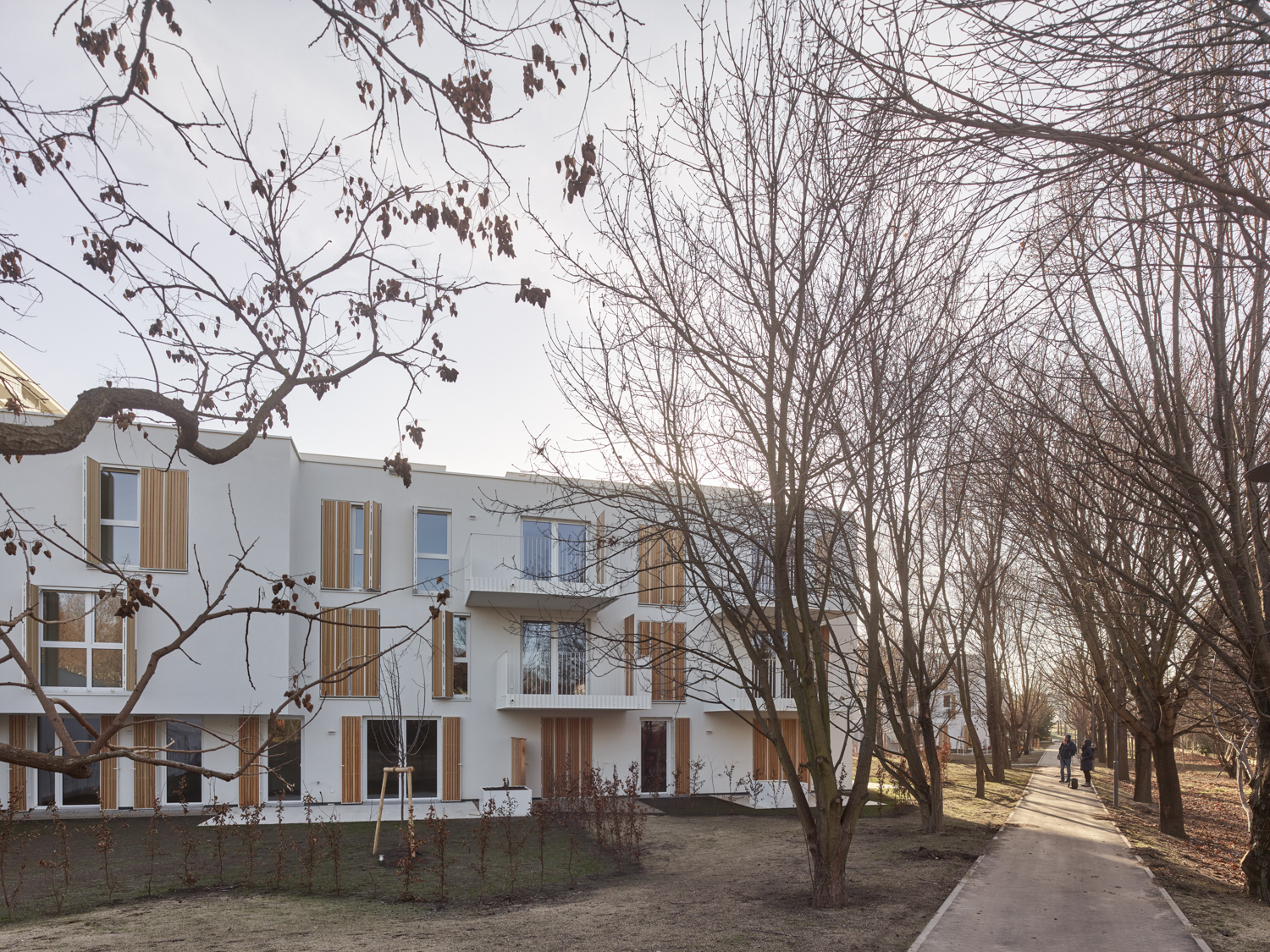
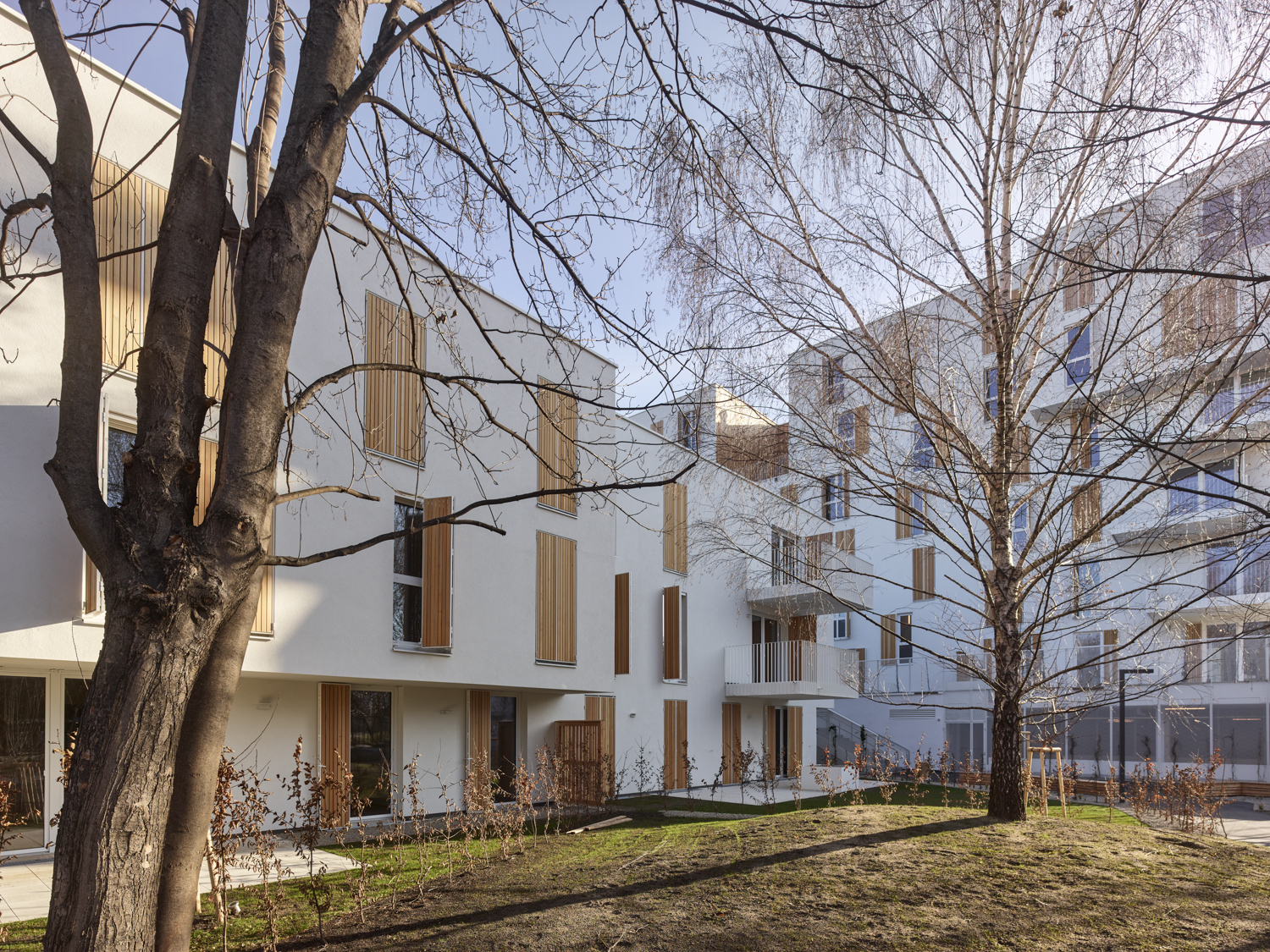
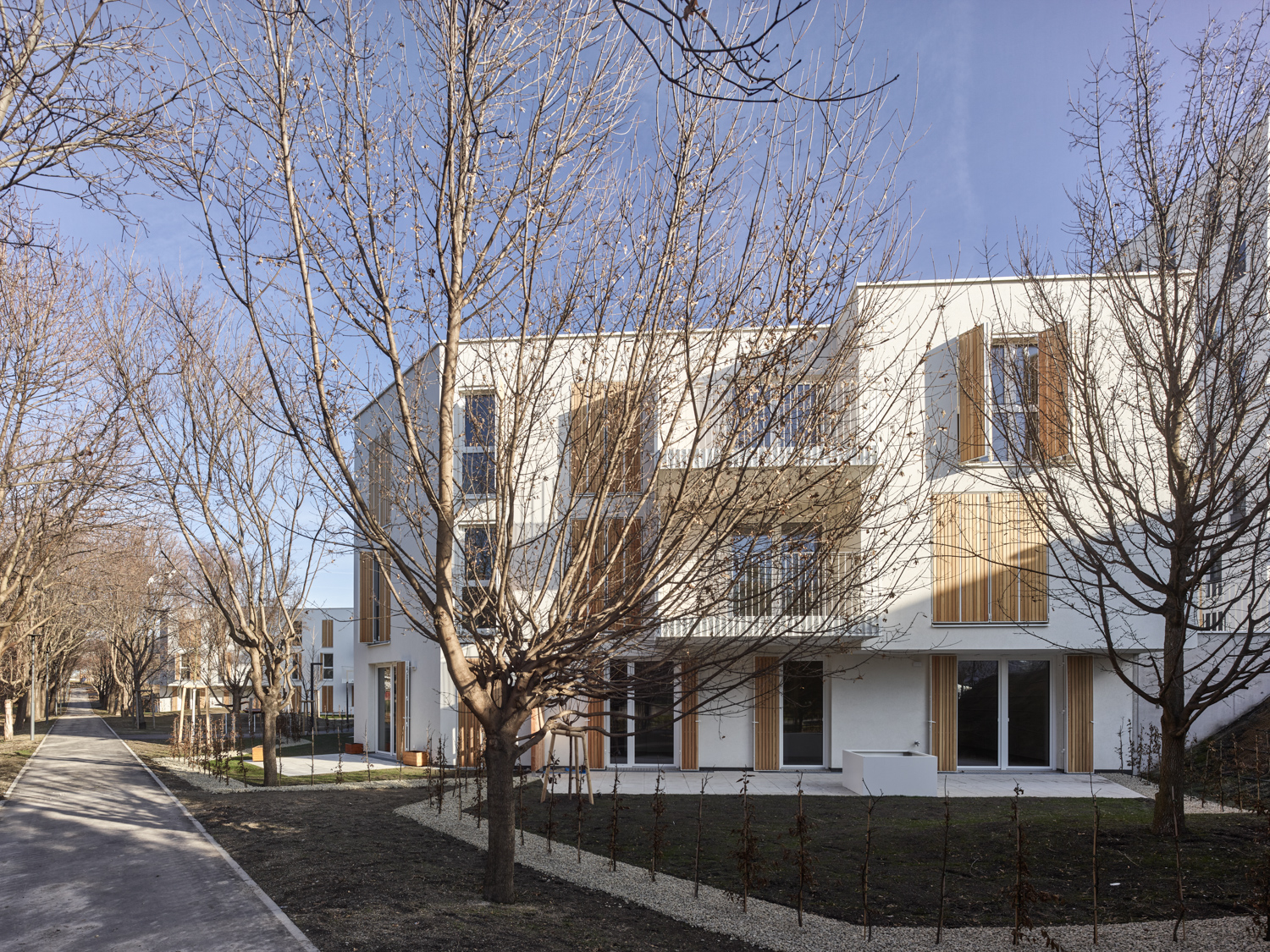
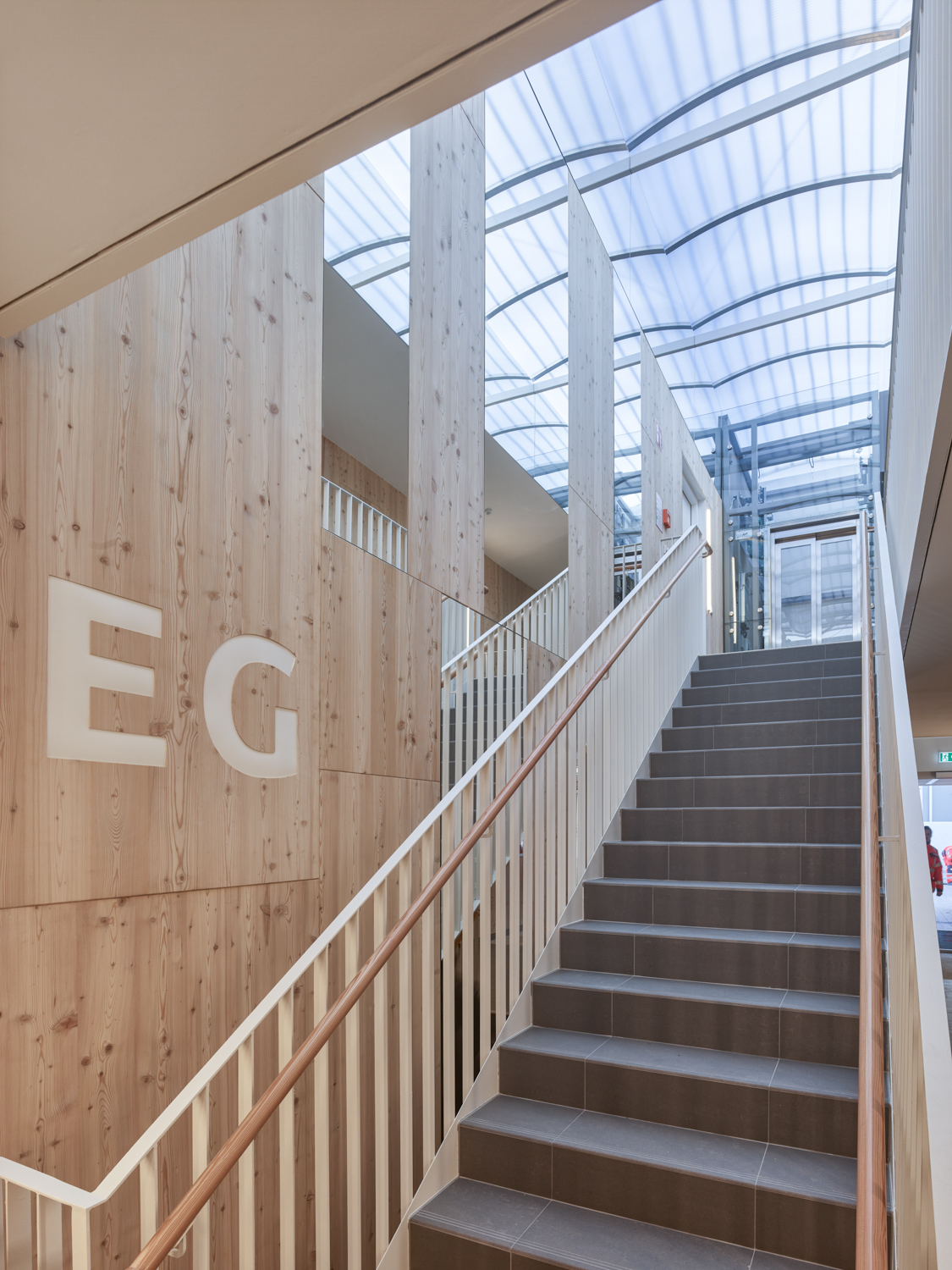
Site informations
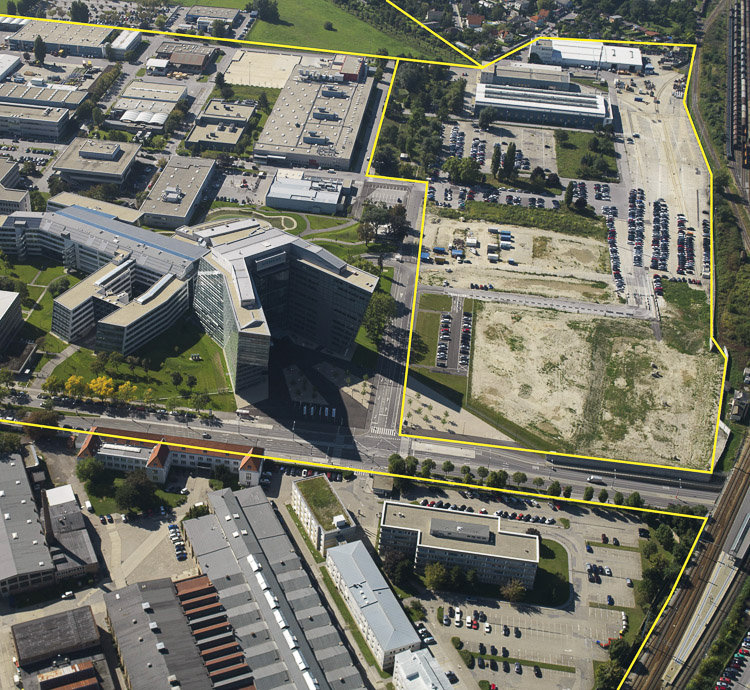
Wien - Siemensäcker
Synthetic site file EN
This project is connected to the following themes
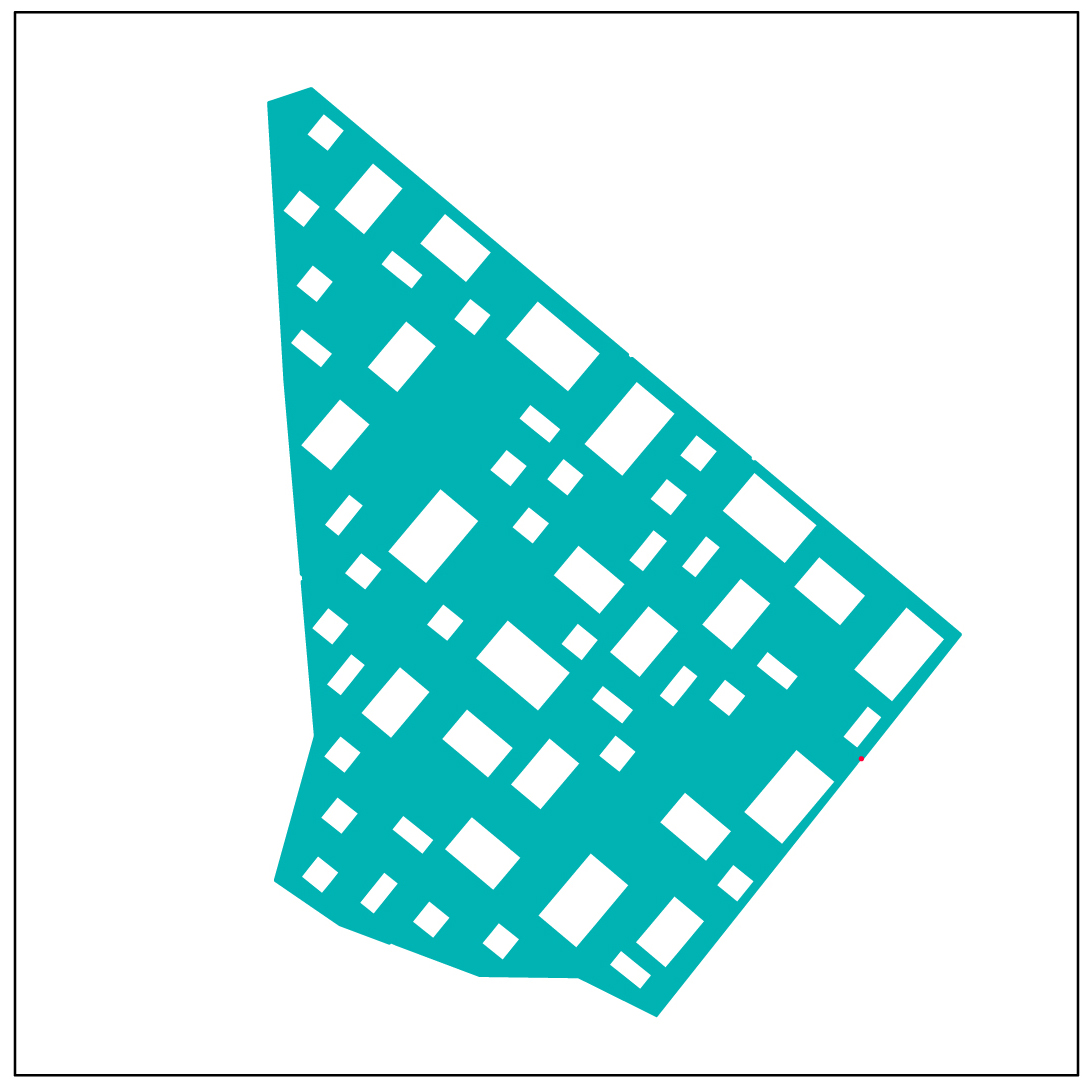
Shared spaces - A Frame for social life
An urban software proposing to go beyond the usual distinction between public and private spaces. The project is based on common space, managed thanks to the software. This way, the spaces do not have predestined uses.
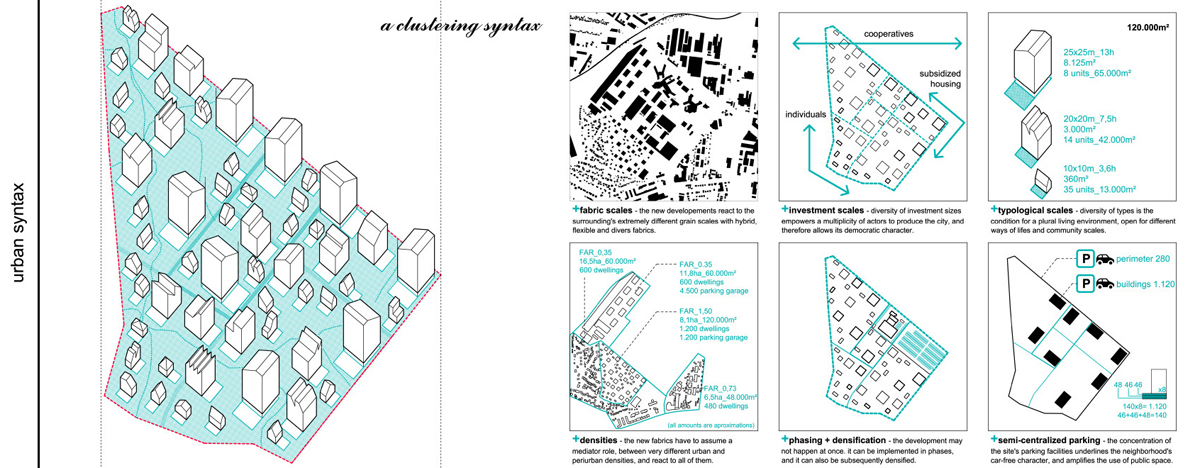
Habitat - Time
A new urbanity based on a process-project approach is able to answer to three different contexts through a matrix-based strategy. The management of the processes of urban production is possible thanks to the urban SOFTWARE, the urban SYNTAX and the urban SUPPORTS.